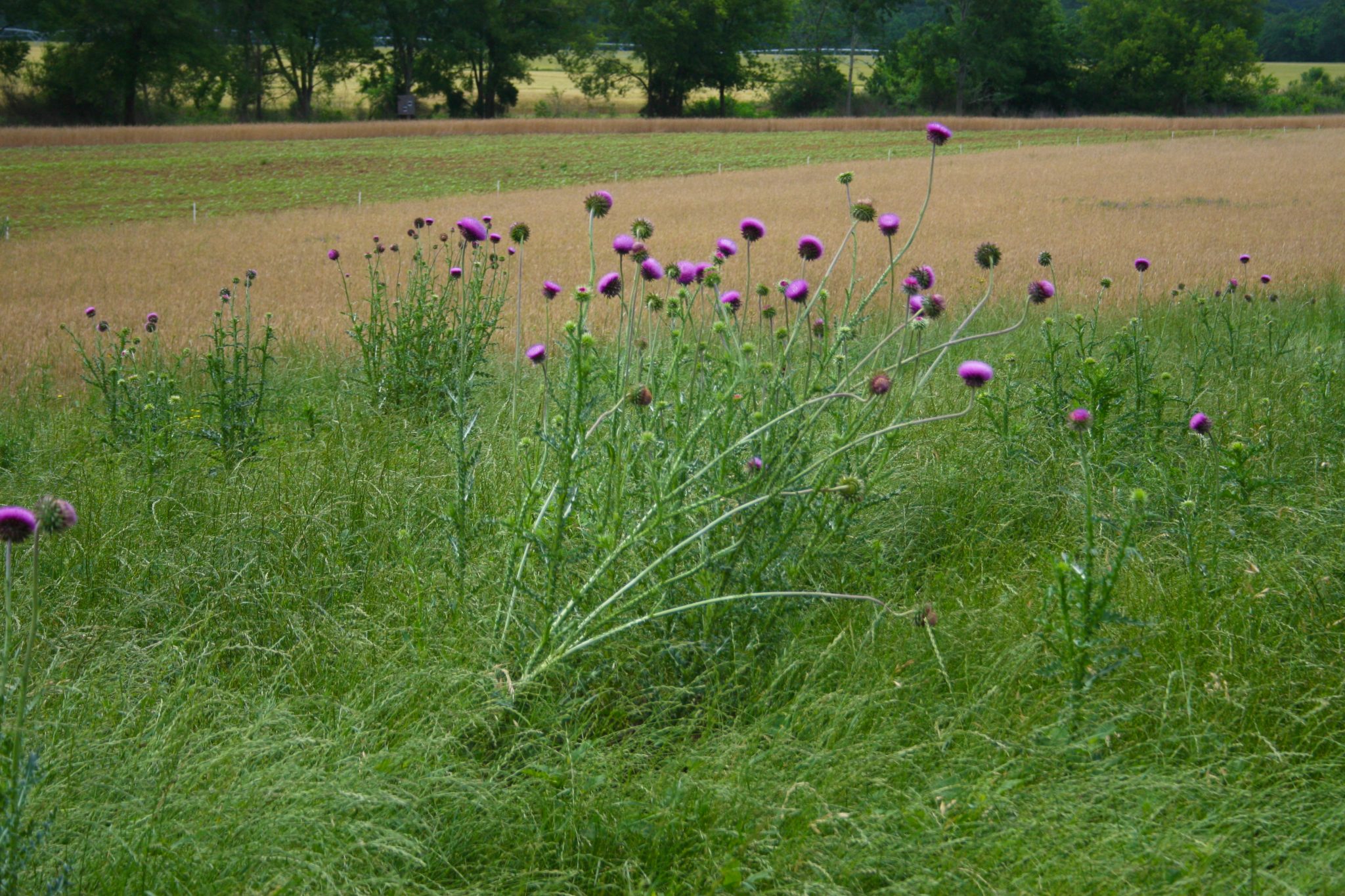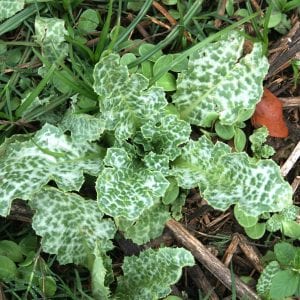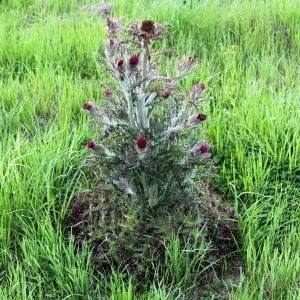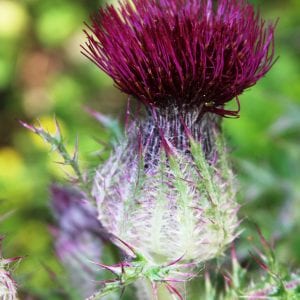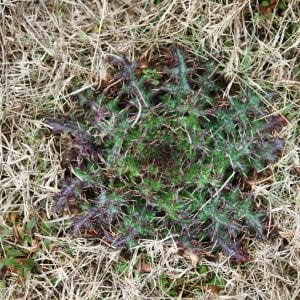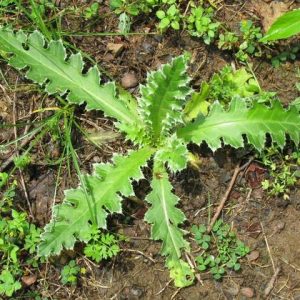Farming

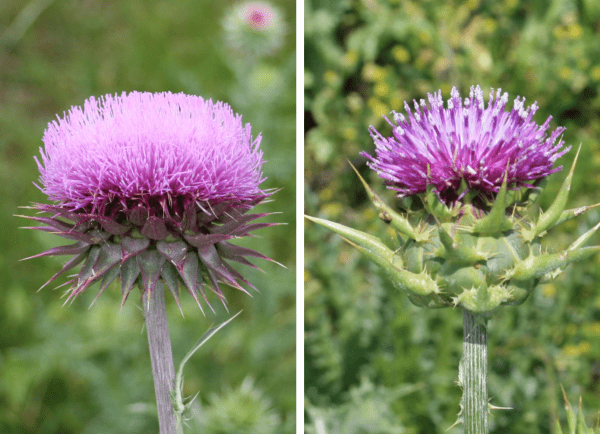
Musk thistle flower head (left). Milk thistle flower head (right).
This persistent weed often sneaks up on producers in spring and can quickly take over a pasture. These frequently asked questions provide answers in the control of thistle growth and spread.
Thistles are a common weed problem throughout Alabama. Their aggressive and spiny growth shades out grasses and clovers and deters cattle from grazing- infested areas. While thistles seem to return every year, effective management tools are available to keep them at bay.
Q: What are the most troublesome thistles in Alabama?
Musk thistle or nodding thistle (Carduus nutans) is the most aggressive non-native thistle in Alabama. Yellow thistle, also known as horrible thistle (Cirsium horridulum), is native and abundant throughout much of the state. Milk thistle (Silybum marianum), another exotic, is occasionally found in Alabama as a pasture weed. Bull thistle (Cirsium vulgare) is uncommon, and Canada thistle (Cirsium arvense) is extremely rare if present at all.
Q: How can I tell them apart?
Identifying thistles when they are in the rosette stage can be extremely difficult. However, the mature plants are easily distinguished:
- Musk thistle has large, nodding, solitary flower heads with wide, single spine-tipped bracts that curve upward. Flowers are deep rose to violet or purple and rarely white. Stems are winged and spiny.
- Yellow thistle has large, clustered flower heads with spiny, feathery bracts that almost enclose each flower’s entire head. Flowers are yellow or reddish- purple and rarely white. Stems are covered in fine hairs and hairlike projections.
- Milk thistle has solitary flower heads with stiff, spiny bracts that often curve downward. Flowers are purple, and the stems are hairless and not winged.
- Milk thistle rosette
- Yellow thistle plant
- Yellow thistle flower head
- Yellow thistle rosette
- Musk thistle rosette
Q: Do thistles affect spring forage production?
Failure to control winter weeds such as thistles can result in substantial forage losses. A dense stand of thistles can also delay the spring transition to warm- season forage grasses.
Q: Can I control thistles with mowing?
Limited control can be achieved with mowing. The optimal time for mowing is when thistles reach the late bolting stage when flower buds begin to emerge. However, new shoots will emerge from buds in the leaf axils below the mowing heights and will flower and produce seed. Horrible thistle and milk thistle typically flower well before musk thistle, so there is no single optimal calendar date for thistle control.
Q: Is it helpful to dig out or hand-pull thistles?
The best time to dig or hand-pull thistles is when they have bolted but not yet flowered. Although many of these thistles do not produce creeping roots, you should remove as much of the taproot as possible to prevent new shoots.
Q: Can thistle be controlled with herbicides?
Herbicide treatment can provide the most effective thistle control to maximize grass forage production. See table 1 for recommended treatments. Always read and follow the label before applying any herbicide.
Table 1. Effective Thistle Herbicides (alphabetical order)
2 Grazon P+D and Surmount are both “restricted use” herbicides.
3 Spot spray rates are based on % volume per volume (% v/v). Example: 1% of product in 1 gallon of water = 1.28 fl oz of product
4 Cimarron Max Part B
| Herbicide Product | Active Ingredient(s) | Broadcast Product Rate | Spot Spray Rate 3 | Timing | Product Safe for Use |
|---|---|---|---|---|---|
| Chaparral | Aminopyralid + metsulfuron | 2 oz/acre | Rosette to early bud | Bermudagrass1 | |
| Cimarron Max | Metsulfuron + dicamba + 2,4-D | Rate 1 | 0.6%4 | Rosette to early bolting | Bermudagrass1 |
| Cimarron Plus | Metsulfuron + chlorsulfuron | 0.25 oz/acre | Rosette | Bermudagrass1 | |
| Duracor | Aminopyralid + florpyrauxifen- benzyl | 12-16 fl oz/acre | 1% | Rosette to early bolting | Bermudagrass1 |
| GrazonNext HL | Aminopyralid + 2,4-D | 1.5 pt/acre | 1% | Rosette to early bud | All grasses |
| Grazon P+D2 | Picloram + 2,4-D | 2 pt/acre | 1.25% | Rosette to early bud | All grasses |
| Milestone | Aminopyralid | 3 oz/acre | 0.1% | Rosette to early bud | All grasses |
| Surmount2 | Picloram + fluroxypyr | 2 pt/acre | 1.25% | Rosette to early bud | All grasses |
| Weedmaster | Dicamba + 2,4-D | 2 pt/acre | 1.25% | Rosette to early bolting | All grasses |
| 2,4-D | 2,4-D | 2 pt/acre | 1.25% | Rosette | All grasses |
Q: What is the optimal herbicide treatment timing?
Treat in late winter or early spring when thistles are still rosettes to maximize spring forage production. While several herbicides are effective on large, bolted thistle, the risk of forage injury increases the longer you wait to spray. Large, bolted thistles in the spring can also delay the growth and early productivity of warm-season forage grasses.
Q: Can I spray later in the spring to gain some residual control of summer weeds?
Except for Weedmaster and 2,4-D, the other products listed in table 1 will effectively control large musk thistle plants that have bolted. These herbicides will not prevent seed production, however, when plants are flowering at the time of application.
To prevent seed production, apply by the bud stage before flowers open. Thistles may take an entire month to die when sprayed at the bud stage. This application timing can provide some residual control of certain summer annual weeds, including horseweed, bitterweed, and spiny pigweed. Spiny pigweed, however, will break through sooner than other annual weeds. Perennials such as horsenettle will also be suppressed but will typically recover by midsummer.
Q: Are fall-timed herbicide applications effective for thistle control?
Fall applications are extremely effective on thistle rosettes. However, soil residual herbicides may not provide complete control through the next summer.
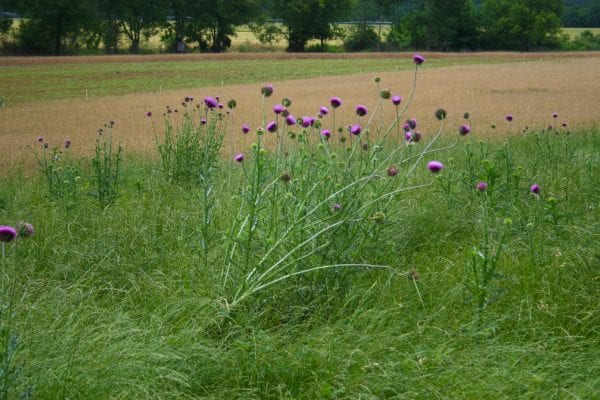
Musk thistle infesting annual ryegrass
Q: Can I spray and keep my clovers?
One of the biggest issues with pasture herbicides is that they are also effective clover killers. Except for low rates of 2,4-D (0.5 to 1.0 pt/acre) applied in December or February, every other commonly used pasture herbicide will severely injure or kill clovers. However, these low rates of 2,4-D are not effective on established thistle rosettes. Spot spraying individual plants rather than broadcast application over many acres is a technique to reduce injury to clovers and other sensitive forages. Also, waiting until after clovers seed before spraying is difficult to do as most thistles will have gone to seed before the clover.
Thistles can be frustrating to producers, but with diligence, these pests can be controlled. Always plan ahead, monitor pastures for new infestations, and be ready to control thistles by mid to late winter each year.

